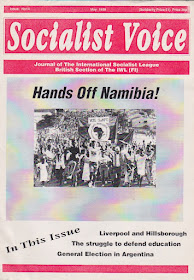Access campaigners want the public’s help in ensuring that public footpaths or bridleways become officially recorded. Because if they are not then the public may find that come 2026 they no longer have access.
That’s because under the Countryside and Rights of Way Act 2000, on 1 January 2026, the official definitive rights of way map is scheduled to close for claims for public footpaths and bridleways that existed before 1949.
Numerous historic routes could be lost as just because people currently use a public footpath or a bridleway does not mean it's protected especially as in some areas very few routes are currently recorded. After 2026 a landholder can stop the path forever if it is not officially recorded.
What can I do to check?
Obtain a definitive map at your local library or council office. If you discover a path if not recorded contact the surveying local authority to see that it is not already accepted as a public highway as the authority may be able to assist in asserting your rights.
Where the authority cannot assist you will need to either gather evidence of use over 20 years or more or unearth historical evidence. Many individuals are willing to do this but there are also organisations that can help such as the Open Spaces Society. (OSS)
The society has established the Find Our Way Fund to assist those who are investigating unrecorded pathways. They are also running courses on how to set up a local group that can then carry out research, apply routes and make applications.
The British Horse Society (BHS) has hundreds of affiliated local bridleway access groups. One of the most active is the Forest of Rossendale Bridleways Association. (FORBA) This was formed after a local farmer shut access in 1979 to horse riders and cyclists on an ancient highway between Edenfield and Rawtenstall.
FORBA succeeded in restoring access in 2013. Key to the victory was the hard work and enthusiasm of the group’s secretary, a passionate horse rider called Chris Peat. She was helped by local genealogist John Simpson, whose reams of data on local history included a lease dated 1622 referring to “the adjacent King’s Highway.” Success came after a Lancashire County Council Planning Inspectorate Hearing dismissed objections that the route should remain closed.
“It was a great day when we were finally able to ride our horses along what is known as Bury Old Road. Of course, most cases don’t take that long. I have submitted five or six successful claims and Lancashire County Council’s processing of them is down since 2000 from 10 years plus to around half that to day.
“The process is quite complicated and you need maps and evidence from users of the highway. You must contact as many landowners as you can find. All this means it may take 2-3 years before a claim can be made to the County Council who will then investigate by walking the route and undertaking their own research. In the final case a public inquiry will be held.”
Peat currently has around 20 further access claims submitted to Lancashire County Council.
“I’d urge anyone who is keen to get involved in protecting our historic routes to get involved with a local group like ours or approach the OSS, which continues to do some great work in defending public access in the countryside.”
Open Spaces Society is at www.oss.org.uk







